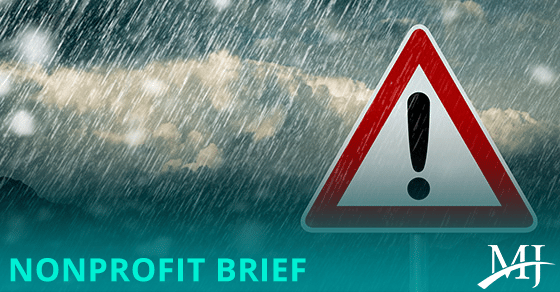It’s been a busy year for natural disasters, with Hurricane Ian only the latest calamity to befall the United States and its territories. If your not-for-profit operates in or serves clients in a disaster zone, you know how difficult the recovery process can be. Unfortunately, fraud perpetrators attempting to profit off the misery of others can make rebuilding difficult — even for charities.
6 steps to foiling construction scams
Construction fraud is a particularly common scheme in the wake of a destructive storm or fire. Your nonprofit might be so focused on reopening and assisting disaster victims that it doesn’t vet contractors as carefully as it would in better times. That’s what fraudsters are counting on. Instead:
- Work with your insurance company to make sure any repairs to your facilities are covered. Your insurer probably will send an adjuster to evaluate the damage, giving you an estimate of what repair costs should be.
- Take time to obtain several bids. Review them carefully, bearing in mind that “special hurricane offers” may be nothing more than come-ons. Be sure the bids specify exactly what work is included, all costs and a time frame for completion.
- Beware of anyone who looks or acts unprofessional or offers to save you money by using leftover materials. You may be agreeing to shoddy components or unsafe workmanship.
- Ask for a state contractor license number and proof of insurance.
- Get a signed contract before work begins and don’t sign it until all blanks have been filled.
- Don’t pay in full until work is completely finished. And don’t pay more than the amount in the contract — even if the contractor claims material costs went up unexpectedly. Before you make your final payment, ask the contractor to sign a Release of Lien form.
Other potential schemes
Construction fraud isn’t the only scam to be aware of. Also watch out for vehicle repair fraud and seek recommendations for reliable mechanics. Check to make sure the shop is accredited by the Motorist Assurance Program (MAP), and request pricing and warranty information up front.
Fake government relief workers are another possibility. Ask to see photo identification cards from anyone claiming to work for the Federal Emergency Management Agency (FEMA). Don’t be fooled by an official-looking shirt or jacket, and remember that FEMA inspectors don’t charge for their services or ask for credit card or bank account numbers.
You can report such scams to the National Center for Disaster Fraud at 866-720-5721 or justice.gov/disaster-fraud.
Prove your own legitimacy
Finally, if your nonprofit needs to solicit donations to help victims or simply to get your operations up and running again, be prepared to prove your own legitimacy. Provide donors with your tax-exempt ID number and point them to your website and sites such as Guidestar and Charity Navigator where they can research your group.
Contact us if you need help getting your nonprofit’s finances in order following a disaster.
© 2022




